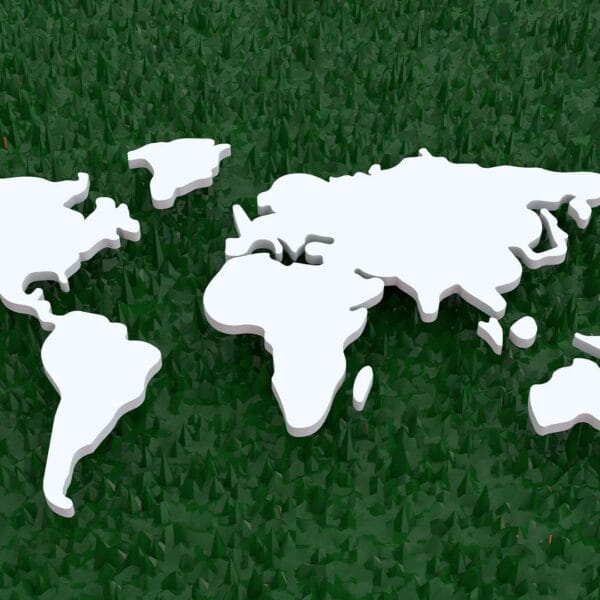When it comes to tennis’s quintessential charm, nothing quite matches the allure and tradition of a grass court. Fans of grass tennis courts appreciate both their beauty and the meticulous care they demand. Constructing and maintaining a grass tennis court is not merely about preserving a playing surface; it’s about sustaining the legacy of the sport itself.
Grass Court Surface
Among the various surfaces utilized in tennis, grass courts hold a special prestige rooted deeply in the sport’s history. The surface construction for grass tennis courts involves a series of meticulous steps that ensure not only the court’s playability but also its longevity.
Grass Court Construction
The construction of a grass court surface begins with the establishment of a stable and well-drained base layer. Typically, this involves a combination of gravel and sand, which must be expertly graded to facilitate proper drainage. The precision required in creating this base layer is crucial. Even a minor error in levelling or compaction could lead to pooling water or uneven growth in the turf, which in turn affects playability.
Insider Tip: Always consult with a soil engineer during the base layer construction to ensure optimal composition and compaction, tailored to your specific local soil conditions.
Grass Court Maintenance
Once the court is constructed, regular maintenance becomes pivotal. This includes daily mowing, as grass courts need to be kept at a precise height to ensure the ball bounces correctly. An efficient irrigation system is also essential to maintaining the grass, particularly in dryer climates. My experience with different irrigation systems has taught me that automated systems help maintain uniform moisture levels, crucial for grass health and durability.
Insider Tip: Invest in a high-quality mowing equipment and train your staff on the precise height requirements for tournament-level play.
Grass Court Renovation
A grass court typically needs to be renovated when the surface begins to show wear after seasons of play or if there are drainage issues. Renovation processes might involve re-leveling the base, reseeding the grass, or even a complete overhaul of the soil and base materials. During one renovation project, we decided to upgrade the entire drainage system, which significantly improved the court’s resilience against weather conditions.
Grass Court Refurbishment
Refurbishment might not be as extensive as renovation, but it is crucial to address aesthetic and minor functional issues. This can include overseeding patches where grass has thinned, sand top-dressing to level out minor irregularities, and enhancing the soil’s nutrient profile. Such periodic interventions keep the court in top playing condition and extend its life significantly.
Insider Tip: Plan refurbishment activities for post-season to give the grass ample time to establish well before the next play season.
Grass Court Resurfacing
Resurfacing is often misconstrued with simple reseeding. However, it involves thorough aeration, possibly introducing new soil layers and comprehensive reseeding. It’s a revival process that breathes new life into the court. A resurfacing project I managed involved importing a specific grass blend suited to our regional climate, which resulted in a much sturdier playing surface.
Grass Court Repairs
Repairs are often inevitable, particularly after heavy seasonal use or due to unexpected damage from weather or pests. Quick patch repairs, addressing issues like divots or worn baseline areas, are essential to maintaining the court’s playability and safety.
Insider Tip: Keep a regular check for fungal diseases or pest infestations, as these can quickly escalate if not treated promptly.
Grass Court Painting
While less frequent, painting the court lines must be done with precision and the right materials that won’t damage the grass. Opt for specialized grass court paint and equipment that ensures sharp, durable lines without harming the turf.
Grass Court Line Marking
Accurate line marking is critical for fair play. Although it seems simpler than it is, precision is key. I’ve learned that using laser-guided line marking tools can significantly ease this task, ensuring that lines are straight and correctly positioned as per regulation.
Grass Court Equipment & Accessories
The right equipment enhances the playing experience. This includes net posts, nets, and even the type of benches used around the court. Ensure these are of high quality and maintained well, as they contribute to both the aesthetics and functionality of the court set up.
Additional Services
Additional services might include consultation for best practices in grass court care, bespoke court design services, or even workshops on maintaining a grass court for club members or private court owners. Expanding your service offerings can significantly boost client satisfaction and engagement.
Insider Tip: Offer seasonal maintenance packages that include pre-season preparation and post-season refurbishment.
In conclusion, constructing and maintaining a grass tennis court is a labour of love, requiring not just technical expertise but a passion for the sport and its traditions. Each step in the process, from the initial groundbreaking to daily maintenance, plays a crucial role in crafting a court that is not only a joy to play on but also a testament to the enduring charm of tennis. Remember, when you care for a grass court, you’re not just preserving a playing surface; you’re nurturing a cherished piece of tennis heritage.
Questions and Answers
Who should I hire for the surface construction of grass tennis courts?
You should hire experienced landscapers or specialized sports construction companies.
What materials are best for the surface construction of grass tennis courts?
Natural grass or synthetic turf are popular choices for tennis court surfaces.
How long does it take to complete surface construction for grass tennis courts?
The construction timeline can vary, but typically takes several weeks to complete.
What if I want a more sustainable option for grass tennis court construction?
You can explore options like using eco-friendly materials or sustainable landscaping practices.
How can I ensure the durability of the grass tennis court surface?
Proper maintenance, regular inspections, and using high-quality materials can help ensure durability.
Isn’t surface construction for grass tennis courts expensive?
While initial costs can be significant, investing in quality construction can save money in the long run through reduced maintenance needs.











